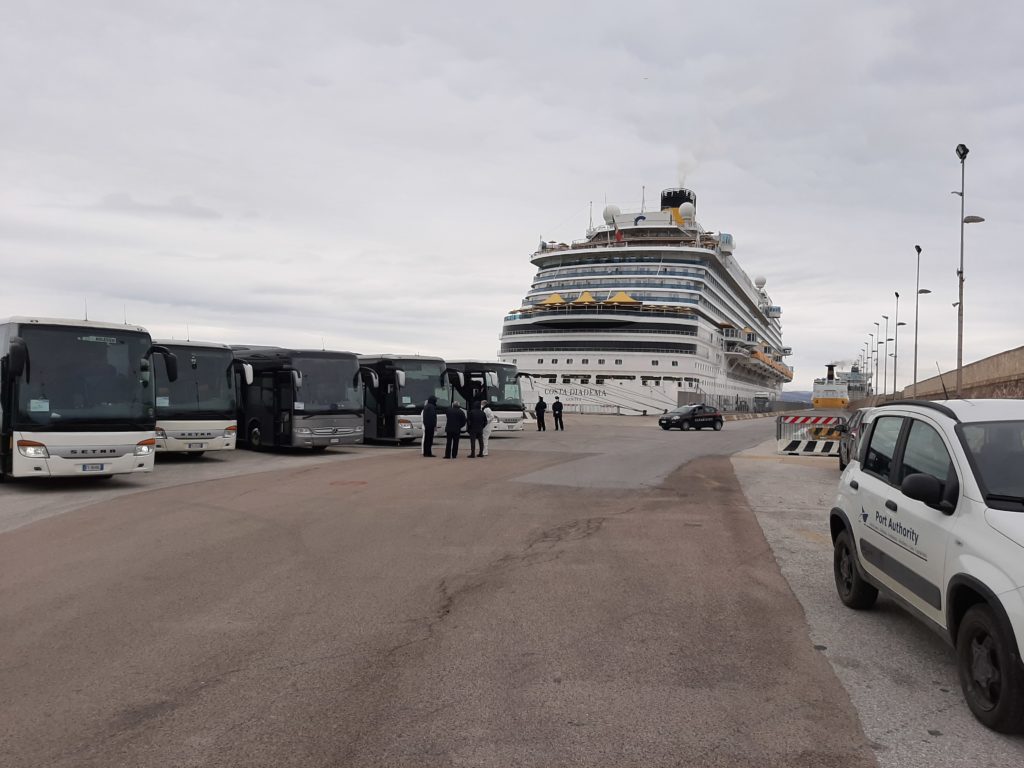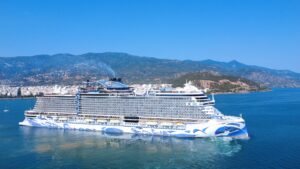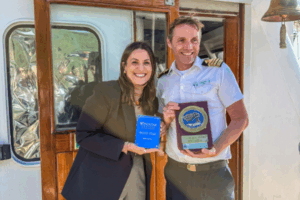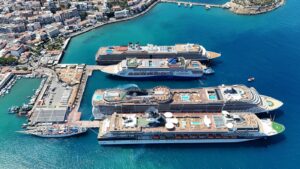Following the arrival in Piombino of the cruise ship Costa Diadema with a crew of 1255 people on board, including 105 Italians, the Port Network Authority took action by opening two areas at the passenger terminal’s CISP building to coordinate activities; a control room and an office reserved for doctors from the Maritime Health Dept.
“Our task force set to work just a few minutes after the Ministry for Infrastructure & Transport informed us of their intention to “divert” the ship from Civitavecchia to our port.” Claudio Capuano, manager of the North Tyrrhenian Port Network Authority in charge of the Piombino’s Territorial Port Office, told Port News
“I can say this without being afraid of stating the obvious: our institutions have been operating in perfect synergy, working as a team and jointly defining the daily tasks to be carried out to address critical issues.”
Three video conferences a day – one local and two regional – promoted and coordinated by the Civil Protection Dept. with the participation of all the competent institutional and health authorities, and the command centres of the Italian ports affected by the presence of Costa cruise ships in their respective ports of call and therefore with problems similar to Piombino’s. The emergency operations are well-coordinated and synchronized among all involved who share the common objective of facilitating the safe disembarkation, as soon as possible, of all seafarers, leaving about 200 people on board to ensure the minimum and essential services for the vessel to remain operational.
“Right from the beginning, we have been taking action so that operations are carried out in complete safety.”- explained Mr. Capuano. – “Under the coordination of the State Police, in collaboration with the Harbour Master’s Office and the Revenue Corps we have set up, using our Port Authority’s Security personnel, two protective barriers, one at the root of the Pecoraro pier, where the ship has berthed, and another one near the mooring, with checkpoints with round-the-clock surveillance.”
All maritime health activities are instead carried out directly under the control of USMAF (Maritime Health Office): “Maritime Health is doing dozens and dozens of quick tests every day on the whole crew, so as to adopt, in a targeted and rational way, the most appropriate measures depending on the circumstances (positive or negative tests, asymptomatic or not, etc.). We are counting on having a complete picture of the passengers’ state of health over the next 5, 6 days at the latest. On the basis of the results, seafarers’ transfers will be arranged: either directly to their homes, if Italian, or, in the case of foreign crewmembers, to Fiumicino and Malpensa airports, for the return to their own countries. A number of coaches are on the quayside ready to use.”
There are seafarers from 19 different counties on the Diadema: “This is an additional critical point”- Mr. Capuano explains – “also because the return to their countries of origin is conditioned by specific border entry policies. The competent ministries and other institutions involved are therefore working to ensure that the seafarers who can return home, can do so on charter flights organized for this purpose.”
Meanwhile, five – more seriously ill – passengers have already been transferred to hospitals specially equipped to handle covid-19 cases. The same treatment will be given to the other positive cases. Mr. Capuano believes that the disembarkation operations from the ship will be completed in about 10 days which “are going to be intense” – he admits – “there are problems and there are not always immediate solutions, but the organizational set up is working perfectly: the town responded immediately and all the institutions, from the police forces to the civil protection dept. ,from the Port Network Authority to the Harbour Master’s Office, from Piombino Municipality to the technical-nautical services, are facing this emergency with a sense of responsibility and commitment to our country. If this is anything to go by, we can look to tomorrow with confidence and cautious optimism.”




